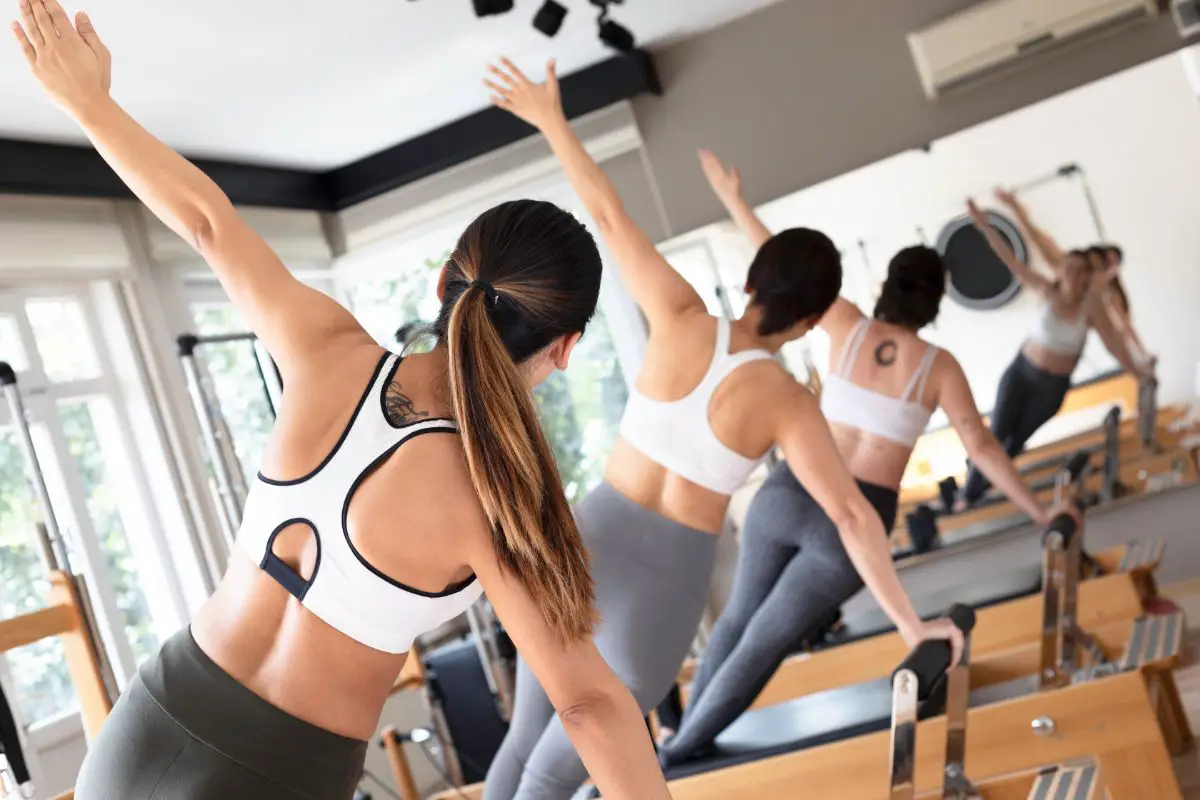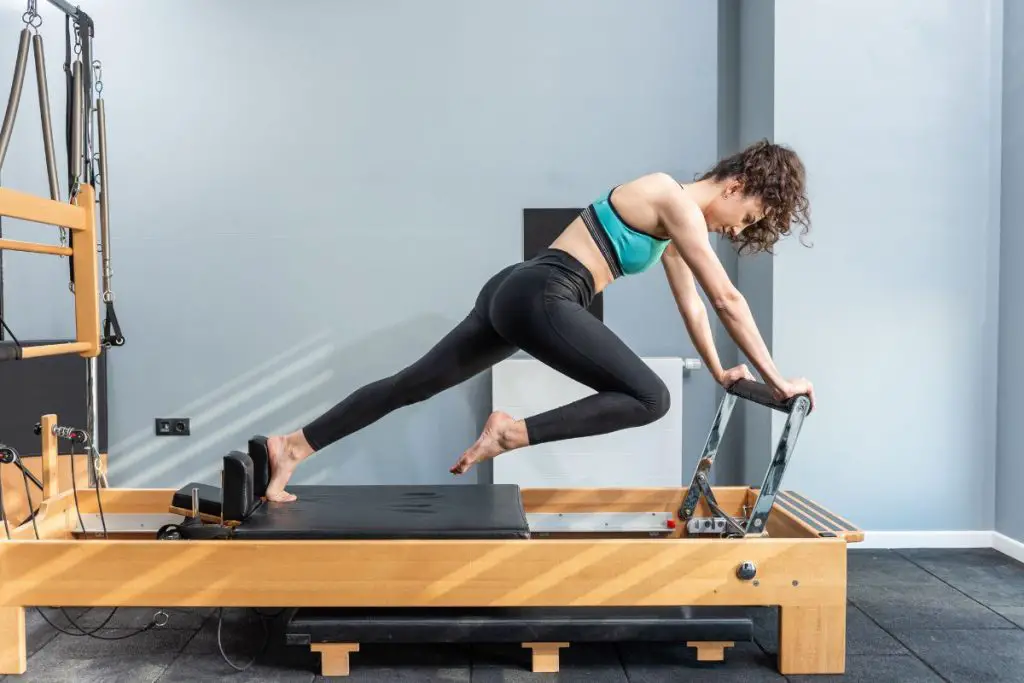Should I Do Pilates? (The Answer Is YES) – Read This Before You Start Your Pilates Journey
Have you been searching online for a new workout routine that will provide you with a nice mix of flexibility, strength, muscle definition, and relief from joint pain?
Pilates probably was the first result you got, so if you are wondering whether or not you should do Pilates, the answer is yes!
While the inception of Pilates happened over a century ago, it is still gaining popularity among new students, with new aficionados joining every day. And there’s a good reason for that. What is that? It works!
There are plenty of advantages to Pilates and no drawbacks. It is a fantastic workout option for everyone, and this article will prove exactly that!
What Is Pilates?
Pilates is a type of exercise and body conditioning created by Joseph Pilates.
Developing the workout in the early twentieth century, Pilates was then primarily used to help dancers recover from injuries.
However, it’s become fairly obvious over time that the average individual could benefit from Pilates.
We, humans, are creatures of habit; we learn how to walk, how to stand straight, and how to sit at the dinner table, all in a specific way that characterizes each one of us.
As a result of overload, our muscles become imbalanced, and Pilates can help fix this.
The Pilates approach is guided by principles such as mind-body connection that leads every move, a focus on engaging the core, accurate and slow physical movement patterns, and steady and controlled respiration.
Pilates workouts can be done on purpose-built equipment, such as a bed-like system known as a reformer, or on a yoga mat or blanket.
Pilates emphasizes the core and is aiming at muscle toning rather than muscle building.
Although many people believe that by saying “core” we mean the abdominal area, it is much more than that. When we talk about the core, we’re referring to the hips, back, sides, and thighs too.
All these muscle groups together play a significant role in our body alignment.
Do I Have To Be Flexible To Do Pilates?
Flexibility is great but definitely not necessary for anyone starting their Pilates journey.
If we were to say that you have to be flexible to do Pilates, then we’d have to say the same about all other types of exercises.
Although there is a link between Pilates and flexibility, being flexible is not required to perform Pilates, so whether or not you are flexible should not determine whether or not you do Pilates
Is Pilates An Effective Exercise?
In a nutshell, yes! Pilates is more than just spreading your hands and legs on a mat, so don’t be fooled—it’s demanding, full-body exercise.
With an emphasis on stimulating muscle groups, even the slightest moves will make you sweat and work your body in a completely different way.
Some movements can, in fact, be very difficult, but the important thing to remember about Pilates is that it is not about doing it perfectly from the start.
We must dispel the notion that we must move in a specific manner and remember that small steps taken every day that yield the greatest results in the end.
The mind-body connection and the dedication to the workout is Pilates’s lesser-known, and probably most difficult, challenge.
You can’t just let your mind wander to your evening work commitments or what you’re planning to eat later that day when you ought to be concentrating on your inhalation and exhalation, motion, and stimulation of your core muscles.
While moving slowly and carefully is challenging, it is one of the main reasons why people enjoy doing Pilates.
It is an hour you are dedicating to your soul and body and a time when you take care of your physical and mental health
Now, you might be wondering how to get started, so here are some things to know:

Mat Classes Can Be A Good Place To Start For Beginners
As we mentioned previously, Pilates is divided into two types: mat Pilates and reformer Pilates.
Pilates sessions are therefore either held on a mat that is slightly thicker than a classic yoga mat or on a piece of equipment known as a Pilates reformer, a sliding platform with a mounted foot bar, springs and pulleys that add resistance.
Establishing an effective Pilates groundwork with mat classes before moving on to Reformer Pilates can be beneficial because it teaches your body the way to hold itself without external resistance.
You’ll understand how to involve certain muscle groups to do an exercise with correct posture by using bodyweight resistance.
Searching for Pilates sessions named “classic mat” as a Pilates beginner can be a terrific starting point.
This is because they normally cover the basics in an order that allows you to become familiar with stimulating your deep muscle groups.
When you realize you are comfortable and want to step on the reformer—again, look for classes labeled “classic reformer”—it’s a good idea to show up before the class’s scheduled starting time.
That way, the instructor can introduce you to the reformer and go through every detail so that you will know some things in advance and can then focus on engaging your mind and body with the exercise.
Pilates Sessions May Or May Not Necessitate The Use Of Equipment
There are some extra pieces of Pilates equipment you should know of, but they are unlikely to appear in a beginners’ Pilates mat class.
Those are the Wunda, the Cadillac, the spine corrector, the high chair, and the Magic Circle.
Whatever class you pick, don’t forget to let your instructor know that you are a newbie.
That way that can help you more during the session and offer you exercise modifications or advice on how to correct your form.
You Can Do Pilates At Home
If you’re not one for group classes and prefer working out alone, Pilates is still a big yes. You don’t have to go to a Pilates studio to do Pilates, especially when there’s no desire to join others too.
If you prefer to explore a new workout in the privacy of your own home rather than in a group class, you can begin with Pilates at home with an online app, a YouTube video, or even a virtual class (don’t worry; you don’t have to talk to others).
What Is The Right Outfit For Pilates?
As with any type of training, comfort is essential. We suggest you avoid wearing anything with zippers that could dig into your skin while you are on your mat doing Pilates.
What we recommend is wearing slightly tighter-fitting sportswear, as you should feel confident in your clothing because it will help you stand up straight and promote greater posture.
Choosing the right leggings and sports bra will make your workouts and overall Pilates journey much more pleasant and comfortable.
Pilates socks can also help you as you are transitioning from one move to the next, and they are especially useful when you’re practicing Pilates at home or on the floor as they come with non-slip silicone grips.
The Bottom Line
You don’t have to think twice when it comes to Pilates. This type of exercise is great for all ages, fitness levels, and body compositions.
So, now that you have a yes from us, go ahead and sign up for some online or in-class sessions!





